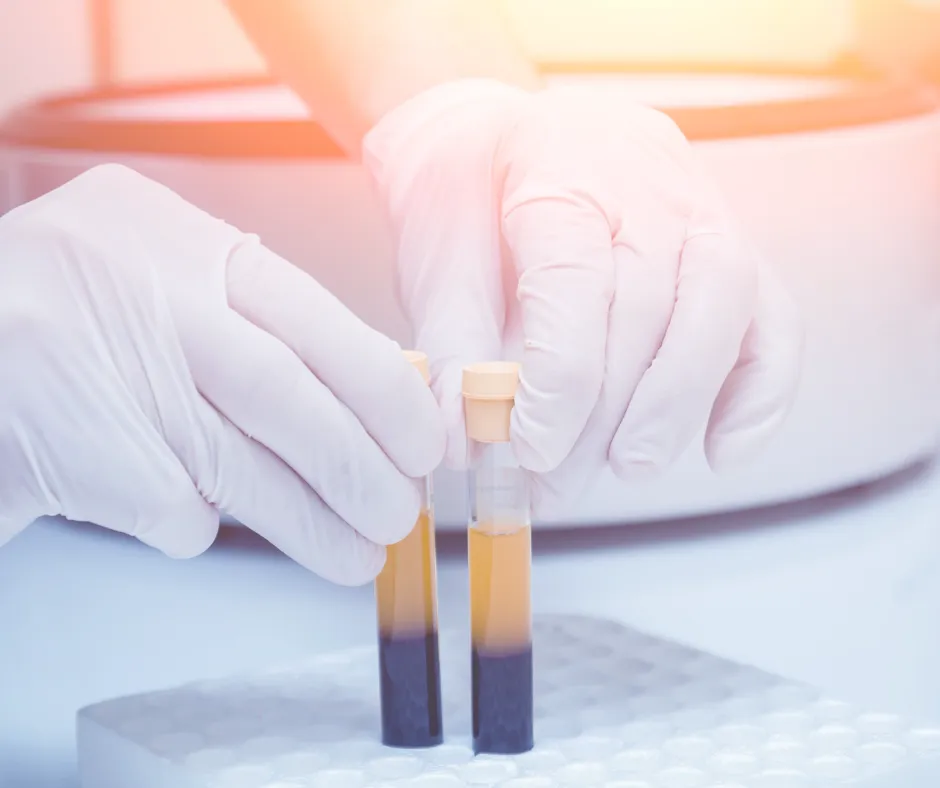Heel Pain | How PRP Injection Therapy Can Relieve Your Pain
PRP Injections Can Help Treat Plantar Fasciitis

Heel pain is a common problem that affects millions of people worldwide. This pain can be caused by various factors, such as plantar fasciitis, heel spurs, tendonitis, and stress fractures, to name just a few.
For many people, conventional treatments such as rest, physical therapy, or painkillers may not be enough to alleviate their symptoms, which can limit their ability to walk or run comfortably.
In recent years, a promising treatment for heel pain and plantar fasciitis has emerged: PRP injections.
PRP stands for "platelet-rich plasma," a solution that is derived from the patient's own blood and contains a high concentration of growth factors and healing agents.
This article explores how PRP injections can help treat heel pain and plantar fasciitis, what the treatment process entails, and what to expect from a three-treatment course.
What is plantar fasciitis, and how can PRP injections help?
Plantar fasciitis is a condition that affects the plantar fascia, a thick band of tissue that connects the heel bone to the toes.
When this tissue becomes inflamed or overstressed, it can cause stabbing pain in the heel area, especially in the morning or after long periods of standing or walking.
PRP injections can help reduce the pain and inflammation of plantar fasciitis by helping the body's natural healing process.
The injection introduces growth factors and proteins that stimulate the production of new tissues and blood vessels, which can promote faster healing and tissue repair.
How is the PRP injection administered, and what is the treatment process?
To administer a PRP injection, the doctor will take a small amount of blood from the patient's arm and spin it in a centrifuge to extract the platelet-rich plasma solution. The concentrated solution is then injected into the affected area, typically under ultrasound guidance, to ensure precise placement and maximum effect.
The PRP treatment process usually involves a series of three injections spaced about two weeks apart.
The treatment schedule and dosage vary depending on the individual's condition and response to treatment.
Many patients report feeling some relief within a few days or weeks, although the full benefits may take up to several months.
Who is a good candidate for PRP injections, and what are the benefits and risks of treatment?
PRP injections are generally considered safe and well-tolerated, with few side effects or risks.
However, like any medical treatment, PRP injections may not be suitable for everyone, especially those with certain medical conditions or allergies.
Good candidates for PRP injections are typically those who have tried and failed to respond to traditional treatments for heel pain or plantar fasciitis, such as rest, physical therapy, or corticosteroid injections.
Additionally, candidates should be in good overall health and have realistic expectations about the treatment's potential benefits and limitations.
The benefits of PRP injections for heel pain and plantar fasciitis include:
- Reduced pain and inflammation
- Faster healing and recovery
- Improved mobility and function
- Minimal downtime and recovery time
- No risk of allergic reactions or rejection
How can patients optimize their chances of success with PRP injections?
To maximise the chances of success with PRP injections, patients should follow their doctor's instructions carefully and adhere to a consistent treatment schedule.
Other tips for optimising the treatment outcomes include:
- Rest the affected foot as much as possible
- Apply ice or heat as directed to reduce inflammation and swelling
- Wear supportive shoes or orthotics as recommended by the doctor
- Combine PRP injections with physical therapy or other complementary treatments
- Maintain a healthy lifestyle and diet to support healing and tissue regeneration
In Summary
PRP injections offer a promising and effective treatment option for many patients struggling with heel pain and plantar fasciitis.
By delivering a concentrated dose of growth factors and healing agents directly to the damaged tissue, PRP injections can reduce pain, promote healing, and improve mobility and function in a safe and minimally invasive way.
If you are experiencing persistent heel pain or plantar fasciitis symptoms, talk to your doctor or foot specialist to see if PRP injections may be a viable treatment option for you.
To learn more about how Foot-Doctor can help, click below to take your assessment.
